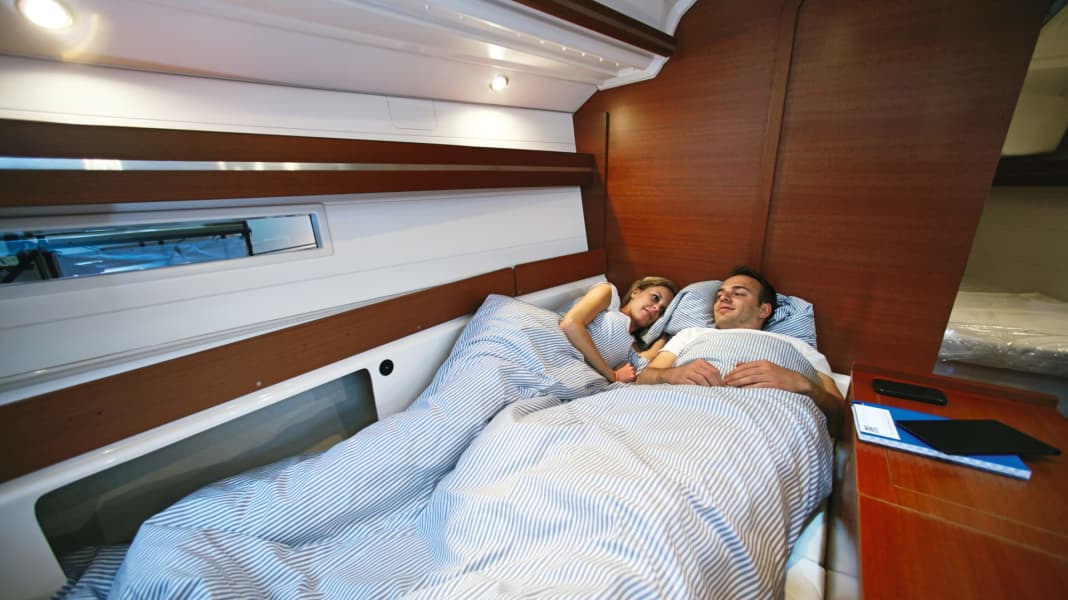
In this article:
Small waves smack gently and evenly against the hull, somewhere a few seagulls quietly wish each other goodnight, otherwise hardly a sound can be heard. The stars twinkle through the open forward hatch - after an eventful day of sailing, everything has come to rest. The perfect conditions for an undisturbed night.
Thanks to the relaxed atmosphere, the crew usually finds it easy to fall asleep - but unfortunately it is not always restful. The problems are complex. Firstly, the bunk has to offer enough space. Exactly how much space you need to rest is, like many things relating to an optimal night's sleep, an individual question.
In addition, the shape and size of the sunbathing area are usually predetermined by the boat type and can only be changed afterwards with a great deal of effort. This point should therefore be taken into account when looking for a boat. In its boat tests, YACHT evaluates the comfort in the berths not only in comparison to the standard of the class, but also with regard to the specified minimum dimensions for average-sized adults in single or double berths.
- You can also read more about comfort dimensions: EQUIPMENT: Comfort in the bunk - how to make your bed
Division of the upholstery
It is much easier to improve the comfort offered by the upholstery. This starts with the layout. Sometimes individual parts are optimally cut to allow access to the storage space under the bunk, but not so that you can lie comfortably on them. In this case, a so-called topper can work wonders.
Standard upholstery cannot offer the comfort of a customised mattress. Stefan Bolz from mattress manufacturer Laroma in Schleswig calls the basic equipment of the yards "placeholders", which is not very flattering. "Above all, the upholstery should look good," says Bolz. In fact, the shipyard often pays little attention to lying comfort. Even on expensive long-distance yachts, there is very rarely anything other than an inlay cut from foam. Depending on the size of the boat and the requirements, a material thickness of six to eleven centimetres is common, occasionally twelve or more.
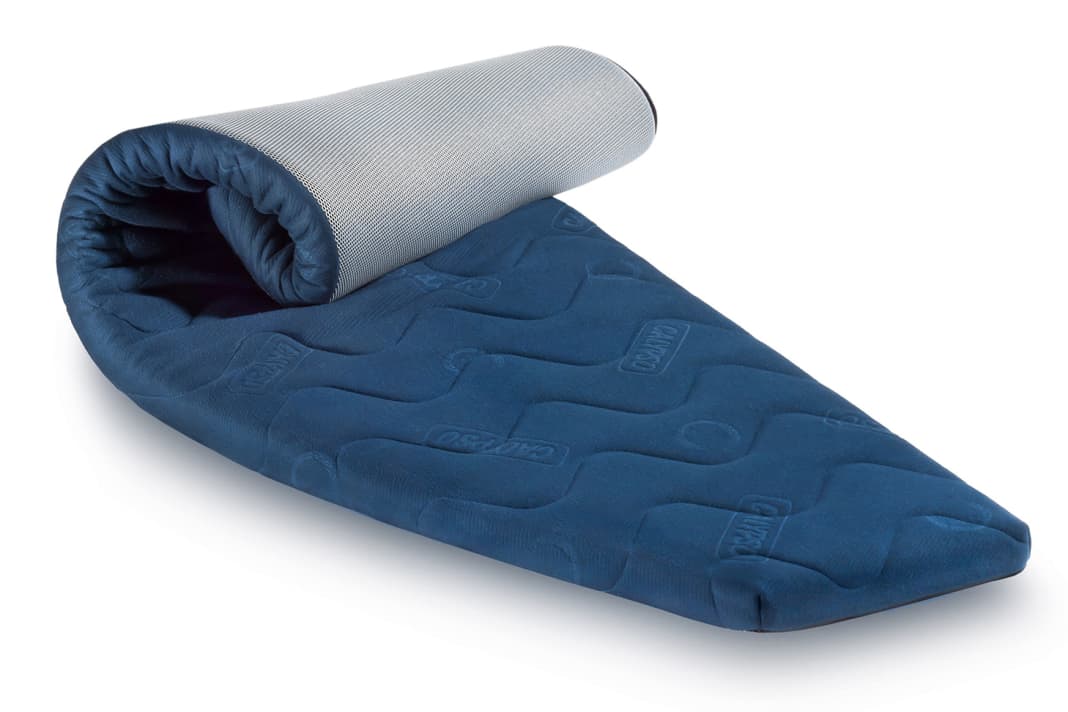


Rocked to sleep, but not recovered
That's a far cry from the 20 centimetres or so of a multi-zone mattress for your bed at home. So it's no wonder that on some mornings, the small of the back pinches because neck muscles are tense or intervertebral discs are compressed. Even sailors who are otherwise robust and have not suffered any spinal damage report that although they are quickly rocked to sleep on board, they do not wake up as refreshed as at home after a basically peaceful night in harbour.
In order for the body to regenerate well during sleep, the muscles must be able to relax. This requires the spine to be in as natural a position as possible. Orthopaedists recommend lying on your side with your knees slightly bent. This requires a point-elastic mattress that suits the sleeper. For the spine to be in the optimum position, the shoulders and pelvis must be able to sink in to different depths during sleep, while the torso is supported.
To achieve this, a certain minimum thickness is required. "Even with our high-quality materials, 17 centimetres is the minimum. Otherwise, the shoulder cannot sink in far enough and the sleeping comfort suffers," says Bolz.
The upholstery is often too hard
Another aspect is often added to the standard equipment: the already thin upholstery is often too hard. This is because the density of the foam used is not sufficient. In order to achieve a certain degree of firmness despite the lack of mass, plenty of hardener is added to lightweight foams. This works for a while, but after a few years such upholstery literally collapses. What's more, if the upholstery is too hard, the sleeper is automatically forced to lie on their back, explains Bolz. The spine is then relaxed, but there is a risk of snoring. Also not good conditions for a restful night.
Incidentally, the upholstery should not be too soft either, as this can not only cause the spine to sag, but also hinder natural sleeping movements. People change their sleeping position more than 30 times during the night. If this repositioning is disturbed, it can lead to tension or the sleep phases are interrupted. According to mattress expert Bolz, the required foam firmness and its distribution across the lying surface are highly individual - they depend on the size, weight and build of the sleeper. The latter generally differs between men and women. Male sleepers with a wider back need a more pronounced shoulder zone, while women usually need their pelvis to sink in further.
Customised upholstery is necessary
If both are to lie comfortably in the same bed, a customised upholstery is necessary, whereby three firmness zones are basically sufficient, according to Bolz. However, this is complicated by the fact that the degree of firmness, which is usually specified in three levels, is not an absolute measure - in other words, the hard mattress from one manufacturer will behave differently to the same rated upholstery from another manufacturer. Covers, upholstery and base must be particularly breathable. As people lose an average of half a litre of water overnight through sweating, and easily twice that amount in summer, there must be no build-up of heat and moisture; otherwise the mattress will become soaked and spackle and mould will form on the underside within a very short time. These cannot even be removed by washing the covers because the spores colonise the upholstery itself.
The result: it smells unpleasant - the typical musty odour that you get on many boats. But that's not all. Such moisture damage is also a permanent problem in terms of hygiene. They are not only a constant burden for allergy sufferers.
So there are plenty of reasons to think about replacing the upholstery. At the latest when the old mattresses are worn out, the question arises: What now? Simply replace the existing foams with new ones or go for a specially optimised mattress?
The thinner the padding, the worse the sleeping comfort
Compared to a bed at home, good bunk cushions are customised. Firstly, they practically always require a three-dimensional cut, because the slope of the ship's side and the constriction of the hull in the bow and stern area do not allow for right-angled shapes. Secondly, they are often limited in height. Particularly in the aft compartments under the cockpit hull, every centimetre of upward clearance is important, especially on older boats with a low freeboard and deep cockpit. However, the thinner the cushions, the poorer the sleeping comfort as a rule. Sometimes the height of the cushions is also limited by unfavourably positioned lockers or cupboards.
Maria Emmrich from Calypso Schafsysteme knows a thing or two about this. "We then work with sloping areas or mobile inserts, because every centimetre of foam height improves comfort. For particularly tight situations, however, the supplier also has a mattress that is only eleven centimetres thin in its range.
Ventilation should be guaranteed
Despite the often cramped conditions on board, adequate ventilation is of great importance. Customised mattresses usually have integrated ventilation channels and breathable cover fabrics. A special base, such as a slatted frame, is therefore not required. Special mattresses for yachts can also be placed directly on the bunk boards without the fear of unwanted moisture build-up. The most common solution today is integrated into the mattress or the cover itself: a grid-like spacer fabric that creates a distance to the mattress base and the ship's side and effectively counteracts moisture build-up.
This spacer fabric is also available to buy separately, for example from Gisatex. Placed under the upholstery, the ventilation of simple standard upholstery can be improved. If condensation forms despite these measures, a simple fleece blanket can sometimes help. In our experience, a thin blanket placed over the upholstery as a sheet improves the situation considerably, as it transports the moisture to the sides before it is absorbed into the foam.
Effects on sleep
Cotton sheets can also have a negative effect, especially if their cut does not match the upholstery and the excess material is simply stuffed underneath. Such a ball of fabric hinders the exchange of air and thus causes spak.
A slat base offers by far the best ventilation. In addition to classic slatted frames, which sometimes make access to the storage space more difficult, various disc spring systems are now available. What they all have in common is that they require a height of between three and six centimetres. However, for optimum sleeping comfort, it is better to put this space into a special mattress, advises expert Bolz.
Conclusion: An investment in good mattresses is always worthwhile and makes your stay on board even more relaxing.
Comfort zone
There are various concepts for customising the firmness distribution of the mattresses
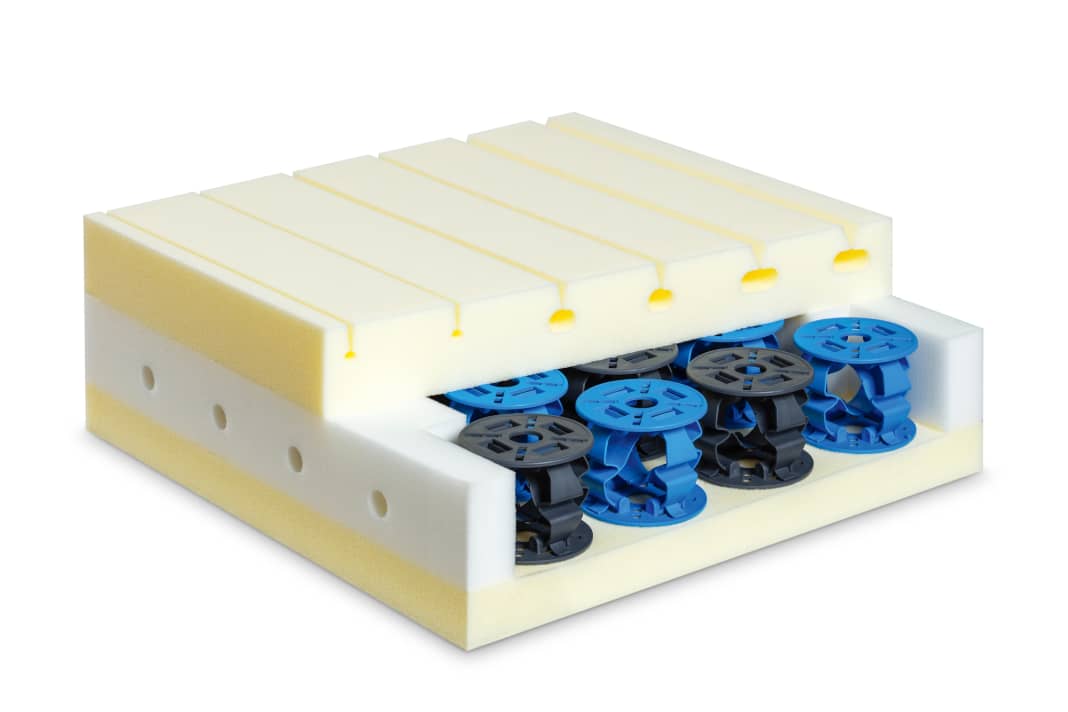



Well aired
Spring systems can improve lying comfort, but above all ensure good ventilation
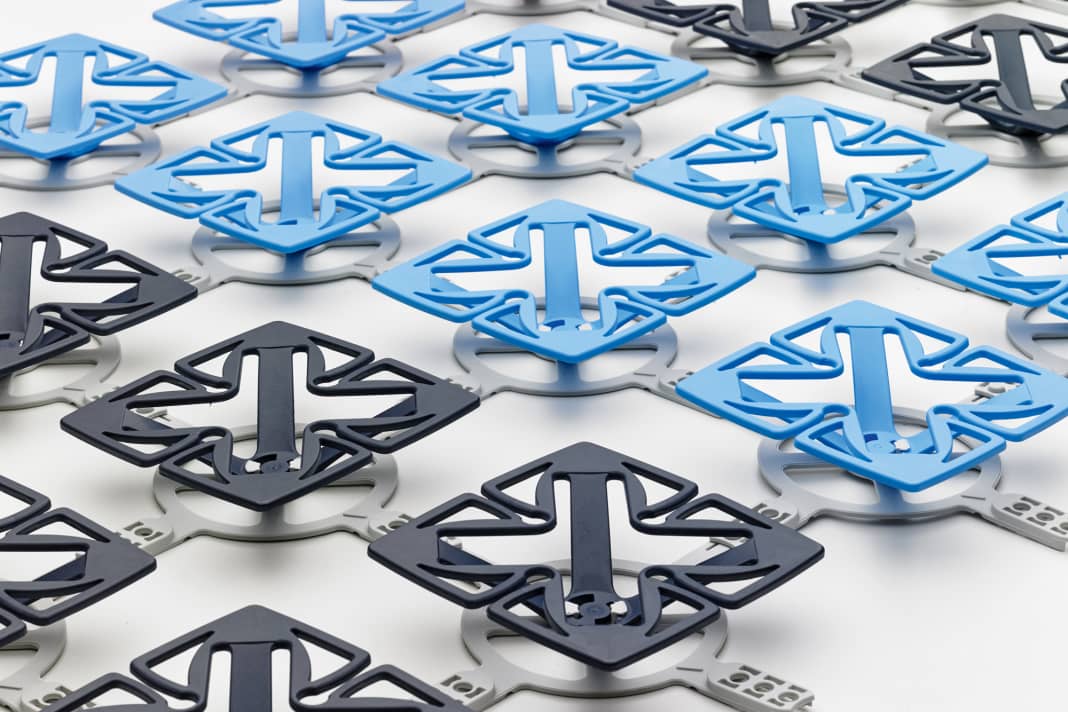





Well measured
What is important when determining the upholstery shape
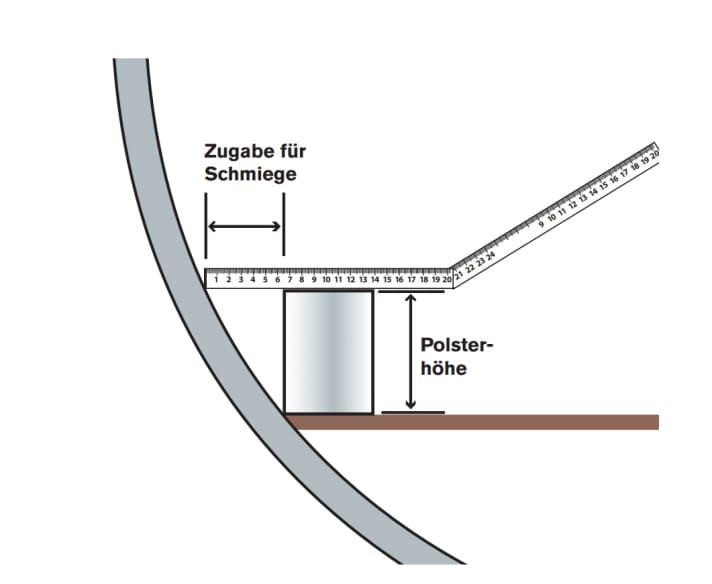
Note the bevelled edge! To measure the base area of the support boards, first note the length and then the width at at least four points. Alternatively, the area can be traced using a solid plastic film. The bevelled edge must be determined to ensure that the cushion fits exactly up to the side of the boat. To do this, select a block of wood - or something similar - the same height as the new mattress and determine the allowance from the lower edge to the hull at at least four points. Specify whether the cushions are to be split lengthways or crossways and where inlay boards are required.

